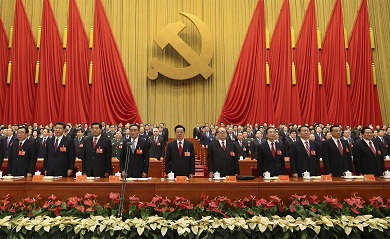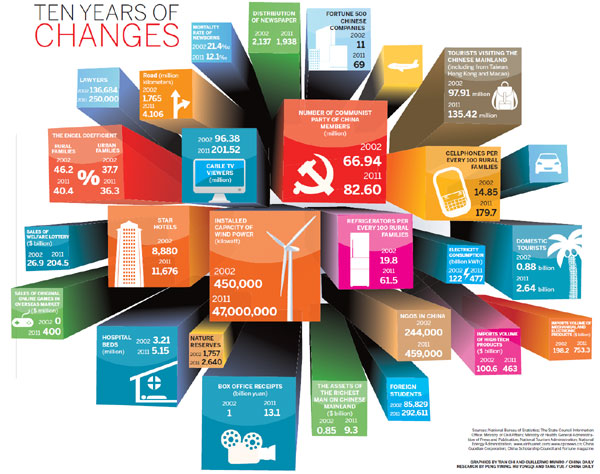One of the greatest mysteries of the 21st Century has been resolved. The names of the seven men that will rule China for the next decade have been officially announced. Li Keqiang, Zhang Dejiang, Yu Zhengsheng, Liu Yunshan, Wang Qishan and Zhang Gaoli will be led by the new Secretary General of the Communist Party, Xi Jinping.
Nonetheless, beyond who will be leading the country, there’s still a pending issue: How will they rule it. Will they go beyond the mirages projected by ten years of miraculous growth? Will they abandon propaganda and nationalism as a way to appease public resentment? Or they will stick to the official discourse that reform in China must follow it’s own pace?
During the wrap-up session of the 18th Congress the newly anointed Xi vowed that their mission, once they formally take power in 2013, will be to meet people’s desire for a happy life. “Our people have an ardent love for life. They wish to have better education, more stable jobs, more income, greater social security, better medical and health care, improved housing conditions, and a better environment. They want their children to enjoy sound growth, have good jobs and lead more enjoyable lives,” Xi said.
“To meet their desire for a happy life is our mission.”, he added. Welfare thus was at the core of his discourse. Notwithstanding, given China’s current stage of development, happiness entails much more than economic growth. People’s wishes described by Xi are all attached to society’s growing resentment. They have seen how wealth had come without welfare. They had to wait, the official message went, until the country were ready to embrace the next step of development.
Orchestrating such a meticulous road-map toward political reform has been possible thanks to a scientific approach to development. A principle fiercely pondered by the outgoing president Hu Jintao. Under the umbrella of a unique form of socialism with Chinese characteristics, China opened itself to the outside world economically. Messages of unity, harmony, stability, nationalism where in charge of appeasing public resentment toward the lack of welfare. The people had to unite and fight for that common cause: the proper implementation of the principle of scientific development.
A few days before the commencement of the 18th Communist Party Congress the official newspaper The China Daily published a set of graphics aimed at letting numbers speak by themselves. If looking at the figures alone, the data shows that China’s development is indeed miraculous: in 2002 there were 9.86 million private cars in China whereas in 2011 the number jumped up to 78.72 million. Urban population raised from a 39% in 2002 to a 51% in 2011. Mobile users in 2001 were non-existent while in 2011 the number reached 356.000.000. The rise of Chinese netizens is also significant. In 2011 there were 33.700.000 netizens compared to the 513.000.000 of 2012. And much more. Let’s take a moment and get a sense of these “ten years of changes” through the following graph.
Titled The decade that transformed China the figures were accompanied by accounts of Chinese citizens’ personal experiences during these 10 years of change. It’s a lot of promising data that boosts Hu Jintao’s legacy of harmonious growth.
But the graphics are also an example of China’s double-edge sword. If prosperity have been attained, as numbers show, why not embracing political reform? Reformist Deng Xiaoping said that this second step of political aperture should be embraced only after sustainable economic development was achieved. And at this very point of intersection is where we find two China’s. The one were nationalism and introspection helps unite people and the one that has opened its economy to the world.
Deng Xiapoing saw economic aperture as the backbone to ensure the survival of the regime. Thirty years later, reforms have made of China the world’s second economy.
Now it’s on the new party’s secretary general and president in waiting, Xi Jinping, to determine whether progress will mark the beginning of a brand new era in the country. A new stage where economic aperture meets political reform. Crossing this crucial point of intersection would actually mean that Chinese leadership is ready to face reality: growth has been miraculous, but pending issues won’t simply disappear.
Nevertheless, for this party that is used to lead alone for 63 years, might as well put people at it’s core. According to the Chinese newspaper The Global Times, Xi said the word people 18 times during his 20 minutes speech. Now it’s time to wait and see if the people will enjoy a certain level of welfare. Hence, they might become fierce consumers instead of great savers.








Be the first to comment on "Will China’s new faces face reality?"